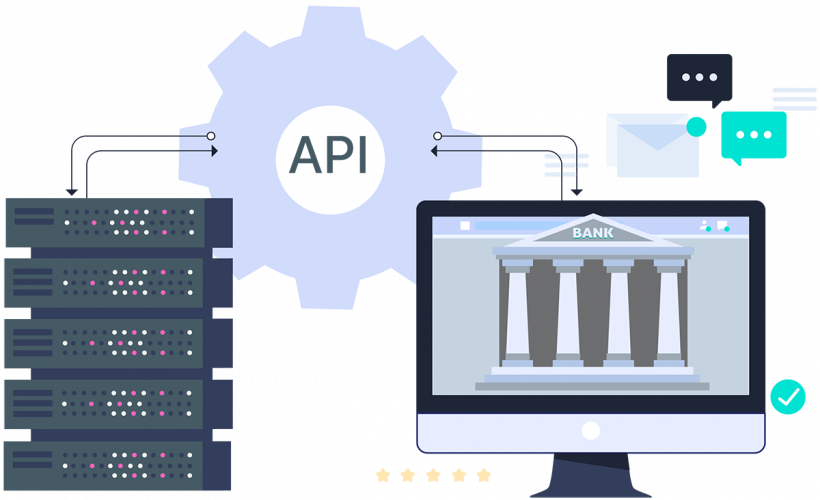BLOG
What is Banking as a Service (BaaS):
Exploring BaaS Trends in 2023


In the rapidly evolving landscape of finance and technology, new paradigms are constantly reshaping traditional banking models. One such innovation that has gained significant traction recently is Banking as a Service (BaaS). But what exactly is banking as a service? This blog takes a look at the concept of BaaS, trends to keep an eye on, and the impact it’s having on the financial industry.
What is Banking as a Service (BaaS)?
Banking as a Service, or BaaS, is revolutionizing the financial sector. It’s a method that integrates tech companies with a bank’s system via APIs. The result? These organizations can create advanced financial services. The integration happens on the provider bank’s regulated infrastructure and promotes open banking services. It’s a win-win for everyone involved. Tech firms can offer financial services without dealing with complex regulatory issues and banks get to offer services through new channels. Much like Software as a Service (SaaS) revolutionized software delivery, BaaS brings a similar shift to banking.
In simple terms, BaaS is a game-changer. It’s making finance more accessible and innovative than ever before. Essentially, BaaS allows for the offering of banking products and services through third-party distributors – which are often NOT typical banking businesses.
Understanding How Banking as a Service Works
To grasp the mechanics of BaaS, it’s essential to explore how it functions. This section delves into the intricacies of BaaS, highlighting the roles of key stakeholders, the technological infrastructure, and the underlying processes that enable the seamless integration of financial services.
When it comes to Banking as a Service (BaaS), several key elements play vital roles in making it function effectively:
- API Integration: BaaS relies on Application Programming Interfaces (APIs) that act as bridges between banks or financial institutions and third-party organizations. These APIs facilitate seamless communication and data exchange.
- Third-Party Utilization: BaaS opens the door for third-party entities like fintech companies, programmers, app developers, and tech organizations, regardless of their financial sector expertise. They can leverage these APIs to access banking services.
- Enhanced Customization: What sets BaaS apart is the flexibility it offers. Third-party organizations can integrate their own features, branding, and value-added services on top of the core banking services provided by the financial institution.
- Collaborative Innovation: With BaaS, fintech and tech companies pay for access to these APIs. In turn, the banks and financial institutions grant them access, fostering collaborative innovation. This allows these third-party entities to create innovative solutions that combine their unique features with the fundamental services provided by the bank.
In essence, Banking as a Service empowers a collaborative ecosystem where traditional financial institutions and tech-savvy organizations can join forces to offer innovative and customized financial solutions.
Benefits of Banking as a Service (BaaS)
But what exactly are the benefits of BaaS? According to Deloitte, “through integrating non-banking businesses with regulated financial infrastructure, BaaS offerings are enabling new, specialized propositions and bringing them to market faster.”
Let’s look more closely at some of the specific benefits that BaaS offers.
1. Accelerated Time-to-Market for Financial Products
BaaS enables financial institutions and fintech companies to rapidly introduce new financial products and services to the market. By leveraging existing infrastructure and partnering with BaaS providers, these entities can bypass the lengthy and complex process of building financial products from scratch. This accelerated time-to-market allows them to capitalize on emerging trends and meet customer demands promptly.
2. Enhanced Customer Experience
BaaS empowers businesses to offer a comprehensive suite of financial services seamlessly integrated within their existing platforms. This integration provides customers with a seamless and convenient experience, eliminating the need to navigate between multiple apps or websites. From fund transfers to payments and lending, customers can access a range of financial services through a single interface.
3. Access to Expertise and Compliance
Navigating the regulatory landscape and ensuring compliance with financial regulations can be daunting. BaaS providers, often established financial institutions, bring their expertise in compliance and regulatory matters to the table. Fintech companies partnering with BaaS providers can tap into this expertise, ensuring that their offerings adhere to the latest industry standards.
4. Cost-Efficiency
Developing and maintaining a full suite of financial services requires substantial investments in technology, infrastructure, and talent. BaaS allows businesses to minimize upfront costs by leveraging the infrastructure and resources of the BaaS provider. This cost-efficiency enables startups and established businesses alike to allocate resources more strategically.
5. Flexibility and Customization
BaaS providers offer flexible APIs and modular solutions that allow businesses to customize their financial offerings to meet specific customer needs. This flexibility enables businesses to tailor their services, adapt to market trends, and respond to customer preferences quickly.
6. New Revenue Opportunities
BaaS opens up new revenue streams for traditional banks and financial institutions. By providing their services as APIs to third-party platforms, these institutions can expand their reach beyond their traditional customer base. This creates additional revenue sources while also increasing customer engagement.
7. Global Expansion
For businesses aiming to expand their services internationally, BaaS offers a streamlined approach. Partnering with BaaS providers that have a global presence can facilitate the expansion process by providing access to localized financial services and compliance expertise in various regions.
8. Innovation and Collaboration
BaaS encourages innovation through collaboration. Fintech companies and startups can focus on creating innovative user experiences and niche solutions while relying on BaaS providers for core banking services. This symbiotic relationship fosters creativity and drives industry-wide advancements.
9. Scalability
As businesses grow, their demands for financial services also increase. BaaS providers offer scalable solutions that can seamlessly accommodate higher transaction volumes and user demands without disruptions.
10. Risk Mitigation
For emerging fintech companies, partnering with established BaaS providers reduces operational and financial risks. These providers bring a wealth of experience, robust security measures, and risk management protocols to the partnership, enhancing the overall stability of the fintech ecosystem.
Discover how Provenir’s AI-powered credit risk decisioning platform can help.
QUESTIONS
Frequenly Asked Questions
Implementing Banking as a Service (BaaS) requires careful planning and collaboration. Here’s a general roadmap for businesses considering BaaS integration:
- Assessment: Evaluate your business needs and objectives. Determine which financial services you want to offer through BaaS.
- Select a BaaS Provider: Research and choose a BaaS provider that aligns with your goals. Consider factors such as their technology stack, compliance capabilities, and track record.
- Integration: Collaborate with your chosen BaaS provider to integrate their APIs and solutions into your platform. Ensure seamless user experience and data security.
- Customization: Tailor the integrated financial services to match your branding and user interface. Consider offering additional value-added features to stand out.
- Testing: Thoroughly test the integrated services to ensure they function as intended. Address any issues or glitches before launching.
- Launch and Monitoring: Launch the BaaS-powered services to your customers. Monitor usage, feedback, and performance to make refinements if needed.
While both Banking as a Service (BaaS) and open banking share similarities, they are distinct concepts:
- BaaS (Banking as a Service): BaaS refers to a comprehensive model where financial services are seamlessly integrated into third-party platforms. BaaS providers offer a wide range of banking functionalities, enabling businesses to offer financial services without the need to build their own infrastructure.
- Open Banking: Open banking involves the sharing of customer financial data among banks and other financial institutions through standardized APIs. It aims to foster competition and innovation by allowing authorized third parties to access this data to develop new financial products and services.
- In essence, BaaS encompasses a broader scope, providing a platform for offering a suite of financial services, while open banking focuses on data sharing to encourage innovation in financial products and services.
The future of Banking as a Service (BaaS) holds exciting possibilities as technology continues to evolve. Here are some trends to watch for:
- Personalization: BaaS providers will offer more personalized financial solutions tailored to individual customer needs and preferences.
- AI and Automation: Artificial intelligence and automation will play a significant role in enhancing BaaS capabilities, from customer support to risk assessment.
- Ecosystem Expansion: BaaS providers will form ecosystems of partners, including fintechs, to offer a comprehensive range of financial services.
- Global Reach: BaaS will facilitate cross-border financial services, enabling businesses to serve customers globally.
- Regulatory Evolution: As BaaS gains prominence, regulations specific to BaaS models may emerge to ensure consumer protection and data privacy.
- Emergence of Niche Offerings: BaaS will support the emergence of niche financial services catering to specific industries or demographics.
- Sustainability Integration: BaaS may incorporate sustainable finance options, aligning with the growing focus on environmental and social responsibility.
The future of BaaS is dynamic and will likely be shaped by ongoing technological advancements, regulatory changes, and evolving customer expectations. How can you take advantage of the benefits that BaaS has to offer? One of the keys to success is choosing the right technology partner.
LATEST BLOGS

Leeds Digital Charity Ball 2025
